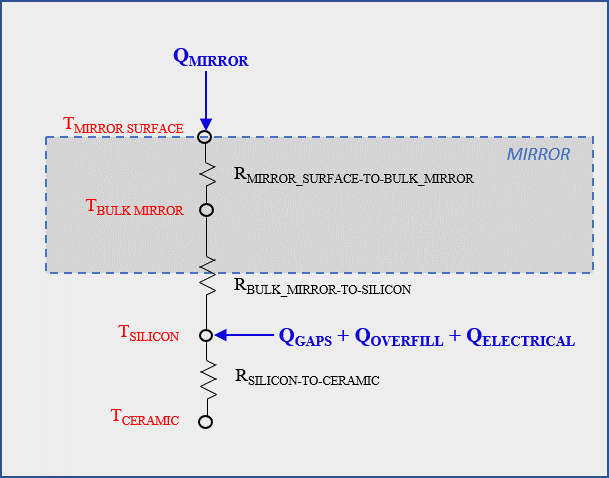DLPA027B January 2024 – April 2024 DLP500YX , DLP5500 , DLP6500FLQ , DLP6500FYE , DLP650LNIR , DLP670S , DLP7000 , DLP7000UV , DLP9000 , DLP9000X , DLP9000XUV , DLP9500 , DLP9500UV
1 Heating of a DMD Micromirror
When light from an optical illumination source is applied to the DMD, the majority of the light is incident on the mirror surface and is reflected. However, a small portion of that incident light is absorbed by the mirror material and must be dissipated through the DMD mirror structure into the DMD silicon, and then from the DMD silicon die to the backside of the DMD ceramic package. Another small portion of the incident light on the DMD falls within the gaps between mirrors directly on the DMD silicon along with any light that overfills the array and falls directly onto the silicon. This light is absorbed by the silicon as heat and combines with the heat generated by the electrical circuits on the silicon and the heat absorbed through the mirror surface to create an overall temperature rise at the DMD silicon. This heat is then dissipated through the DMD ceramic package. A model describing the path of DMD heat absorption and cooling is illustrated by the simple 1-D resistor network in Figure 1-1.
 Figure 1-1 Simplified DMD Thermal
Resistor Network
Figure 1-1 Simplified DMD Thermal
Resistor NetworkThis resistor network shows three temperature rises that must be calculated to determine the mirror surface temperature. TCERAMIC can be measured in a system using an attached thermocouple, but TSILICON, TBULK MIRROR, and TMIRROR SURFACE cannot be directly measured. Therefore, we need to calculate the following temperature delta's: